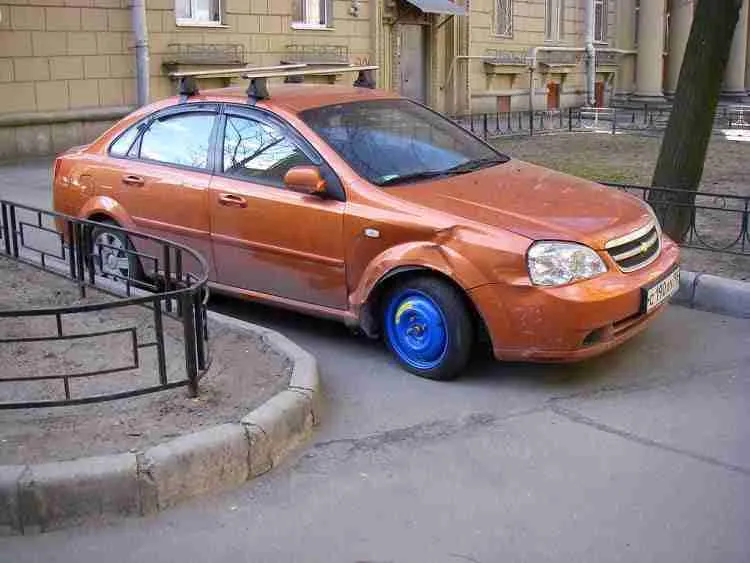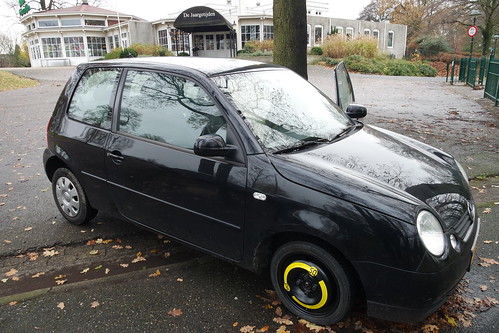How far you can drive on a donut?

Series of years ago, almost every car came with a full-size extra tire; but fuel prudence demands, boot space contemplation and the hazards involved in making preparations to change tires by the roadside and on highways necessitated carmakers to think big and outside the box and came up with a move towards smaller and temporary extra tires. Currently, some cars do not have extra tires at all. However, that is not to say that carmakers want to keep you stranded. It may be that your car is furnished with run-flat tires; or instead of the extra, you will find a tire service kit.
 So, just like an extra tire, a donut tire is a substitution tire that is kept inside your car in the eventuality of a flat tire, and replacement is needed. A donut tire is smaller than the standard tires on your car to enable it to fit nicely into your boot. Due to its smaller size and fragility, it is quite important to contemplate your driving speed with a donut and how long it will last. Donut tires are just for short-term substitution for a flat tire till you can safely reach a service center for your tire replacement. By and large, donuts should not be driven on for more than fifty to seventy miles.
So, just like an extra tire, a donut tire is a substitution tire that is kept inside your car in the eventuality of a flat tire, and replacement is needed. A donut tire is smaller than the standard tires on your car to enable it to fit nicely into your boot. Due to its smaller size and fragility, it is quite important to contemplate your driving speed with a donut and how long it will last. Donut tires are just for short-term substitution for a flat tire till you can safely reach a service center for your tire replacement. By and large, donuts should not be driven on for more than fifty to seventy miles.
Since donuts are smaller than regular tires, they are not designed to put up with the same pressures. They have minute threading, and are just miniature substitutes; and because it is smaller than your car’s other tires, it has to turn faster to maintain the pace of the car and it is because of this, you cannot afford to drive faster than fifty mph on a donut. It is also accident-prone if driven on at a higher speed. Since donuts are only temporary substitutes just for you to get to a service station for a full-size tire replacement, your car’s capacity will be affected when you are driving on one. It is secure to place the donut extra on any axle even at the front so far the speed limit of fifty mph is adhered to.
Take the following precautions when driving with a donut:
- Drive at a much slower speed, not more than fifty mph.
- Be alert because the grip and balance of your car will not work as they are supposed to.
- Ensure the tire pressures are accurate,
- The braking system will be affected.
- Negotiating corners will need tact.
Having a flat tire can be overwhelming and exasperating, however, removing the flat and driving on a spare tire is just a minute part of the whole process. Getting the car safely to a service station, where the serviceman can easily fix your flat tire at a rational cost, and just in case the tire is spoilt beyond fixing, you might need to procure a new one. In older generation cars, every version came with a spare tire that was the same size as the tires on the car. As the years progressed, car producers realized that the extra tire was not used often, and they came to the conclusion that it not a wise decision to furnish every car with a full-sized extra tire. So because of this, producers started leaving a space-saver extra referred to as a “donut” in place of a full-size extra. The type of extra tire in your car is a great determinant of the distance you should drive before buying a new tire.
Over the years, cars were designed with extra tire wells efficient enough to carry a full-size extra. In numerous older generation cars and a few recent models, they still come with a full-size extra tire. A full-size spare tire is weighty and needs space for keeping but is more long-lasting. Interestingly, having taken your car to a workshop and found out that your original tire cannot be fixed, you can immediately ask that the extra tire be fixed on the original tire’s rim; then ensure to check the air pressure in the extra tire. This method is fast and cost-effective, and you can drive on this extra tire for a lengthy duration.
Consequently, it is pertinent to note that the extra tire does not have the same length of usage as the three other tires and make might differ so, for this cause, it might not be safe. It will be safer to buy a brand new tire.
Donut Extra Tire
These slim and concise extras were invented to retain space and poundage in the car; they are also called compact extra tires. The production of these compact tires also enables the producers to make smaller cars however; the tire itself is not made to last long. The owner’s instruction guide will advise on the driving duration and speed limit. You are not expected to drive more than fifty to seventy miles per hour before replacing the donut with a new tire.
The most significant rationale behind the use of these space savers for a limited time is because they have so little threading. This is what makes the extra unsafe and road accident-prone. Its size being so much smaller than the three other tires makes it roll at a quicker pace to meet up with the pace of the mobile car. At more than seventy miles, the oil that facilitates will disintegrate, generating mutilation of the gears and clutch plates.
It is noteworthy to be aware that a donut extra tire cannot be securely exchanged between cars. You can only change donut extras with other cars of the same brand and model. Donut or compact extra tires are uniquely built for the cars that they are matched with. They are not designed to work with other cars. Although the lug hole nuts are the same quantity and the patterns are alike; there are other considerations, such as the tire size and the poundage of the tire. Safety is the keyword here; hence for a safe trip do not try to take a detour. If you do not have the correct donut extra tire, simply call a tow truck to assist you.
Consequently, even the best-designed set of tires has limited longevity, making it pertinent to know the signals of when you need new tires and to consciously take care of a flat tire when it happens.













No Comment